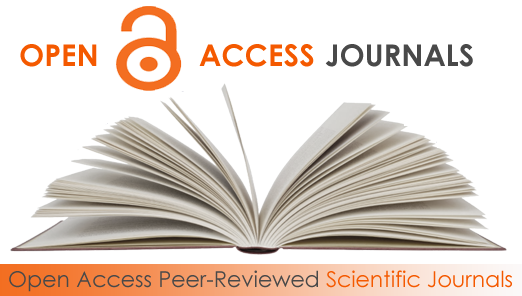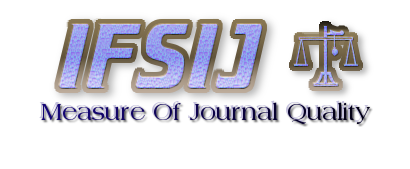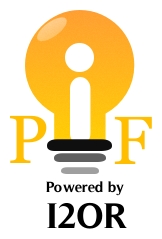Cerebral Palsy risk factors associated with pregnancy and delivery
Abstract
Objective: To identify and analyze the risk factors associated with pregnancy and delivery that contribute to the development of cerebral palsy in children.
Material and Methods: To better understand what factors lead to cerebral palsy in children, a cross-sectional study was conducted at the CRP pediatric hospital in Savar, Dhaka. The study's sample size of 56 was reached by a convenience sample of mothers of children with cerebral palsy. In-person interviews were conducted utilizing a survey instrument translated into Bengali or the native tongue and then pilot tested. Excel and SPSS were used for statistical analysis. Informed consent and confidentiality were ensured under ethical guidelines.
Results: The data shows past socioeconomic variables. Population age distribution: 37.50% 29–35. 88.1% were Muslim. 59% rural residential areas. 35.70% SSC education. 85.7% had two or more children, 45.6% under three. 55% were males, 45% female. 41% of pregnancies had issues, and 24.9% of women underwent abortions. Normal births were 51.80% and cesarean sections 48.20%. Post-birth statistics included crying immediately (34%), yellowish eyes (50%), fever with seizures (61%), head injuries (48%), and birth hypoxia (38%). 35.70% were born at home, 30.40% in hospitals (17.90% public, 16.10% private). Figure 3 showed hypertension (20%), diabetes (16%), and anemia (23%). Age, religion, education, number of children, past abortions, delivery method, and birthplace were correlated. Diabetes, hypertension, anemia, and birthplace were unrelated.
Conclusion: Awareness of cerebral palsy is poor despite its prevalence. In developed country physiotherapy is considered as an important treatment for cerebral palsy children. Quantitative research was used to survey pediatric patients and identify risk variables in this study. Factors shared by many were old age, illiteracy, and origins in rural areas. Risk recognition and mitigation must be prioritized.
Downloads
References
2. Imam, M. T., Ahsan, M., & Rahman, M. (2021). Global distribution and prevalence of childhood disability: A systematic review and meta-analysis. Journal of Pediatric Rehabilitation Medicine, 14(3), 317–329.
3. Khandaker, G., Smithers-Sheedy, H., Islam, J., Alam, M. N., Jung, J., Novak, I., &Badawi, N. (2018). Bangladesh Cerebral Palsy Register (BCPR): A pilot study to develop a national cerebral palsy (CP) register with surveillance of children for CP. BMC Neurology, 18(1), 137.
4. Suwal, M. K. (2017). Risk factors associated with cerebral palsy in Nepali children. Kathmandu University Medical Journal, 15(58), 20–24.
5. Schneider, J., Vollmer, B., Kortenbruck, M., Voigt, F., Hesse, G., &Hinkson, L. (2018). Association between advanced maternal age and the risk of cerebral palsy: A nationwide cohort study. BMC Pregnancy and Childbirth, 18(1), 343.
6. Joud, A. R., Okasha, A. A., Tawfeek, A. M., Nasef, N. M., & Abdel Moneim, H. (2020). Prevalence of cerebral palsy among children attending El Mowassat Hospital in Cairo, Egypt: A cross-sectional study. Middle East Current Psychiatry, 27(1), 1–6.
7. Lang, T. C., Rice, M. S., & Wallace, E. R. (2012). Racial and gender disparities in the incidence of cerebral palsy among very preterm infants: A population-based study. Pediatric Neurology, 47(5), 302–306.
8. Ismail, N. A. (2022). Cerebral palsy among children in Kuwait: Prevalence, subtypes, and associated factors. Medical Principles and Practice, 31(1), 52–57.
9. Himmelmann, K., Beckung, E., Hagberg, G., &Uvebrant, P. (2018). Gross and fine motor function and accompanying impairments in cerebral palsy. Developmental medicine and child neurology, 49(5), 417-423.
10. Novak, I., McIntyre, S., Morgan, C., Campbell, L., Dark, L., Morton, N., ...& Goldsmith, S. (2013). A systematic review of interventions for children with cerebral palsy: state of the evidence. Developmental Medicine & Child Neurology, 55(10), 885-910.
11. Schneider, C., Charpak, N., Ruiz-Peláez, J. G., & Tessier, R. (2018). Cerebral palsy outcomes at early school age in infants treated with therapeutic hypothermia. Pediatrics, 141(Supplement 1), S87-S95.
12. National Institute of Neurological Disorders and Stroke. (2021). Cerebral palsy: Hope through research. Retrieved from https://www.ninds.nih.gov/Disorders/Patient-Caregiver-Education/Hope-Through-Research/Cerebral-Palsy-Hope-Through-Research
13. Lang, T. C., Campbell, S. K., &Klingbeil, F. (2012). Treatment-specific changes in children with cerebral palsy. Developmental Medicine & Child Neurology, 54(5), 415-420.
14. Nahar, S., Rahman, M., Hossain, M. M., Ferdousi, S., Miah, A. H., & Khan, N. Z. (2017). Home births and the risk of neonatal and child deaths: findings from a prospective cohort study in rural Bangladesh. BMJ Global Health, 2(2), e000260.
15. Alvarez, C. M., & Davidson, L. L. (2021). The association between mode of delivery and cerebral palsy: A review. Obstetric Medicine, 14(4), 187-192.
16. Hossain, M. S., Uddin, M. E., &Akter, S. (2020). Risk factors and pattern of cerebral palsy in Bangladesh. Bangladesh Journal of Child Health, 44(1), 35-41.
17. Khan, S. H., Saha, D., Karim, R., Ali, S., & Chowdhury, S. M. (2020). Risk factors for cerebral palsy in Dhaka, Bangladesh. Journal of Clinical Neonatology, 9(4), 229-233.
Copyright (c) 2023 Shahid Afridi, Mohammad Anwar Hossain, Zahid Bin Sultan Nahid, Md. Raisul Hassan, Dr. Md Golam Nobi, Noor Ahmad, Jannatul Taslima Meem, Sahana Chowdhury, Md. Mahfujur Rahman

This work is licensed under a Creative Commons Attribution-NonCommercial-NoDerivatives 4.0 International License.
Author(s) and co-author(s) jointly and severally represent and warrant that the Article is original with the author(s) and does not infringe any copyright or violate any other right of any third parties, and that the Article has not been published elsewhere. Author(s) agree to the terms that the GPH Journal will have the full right to remove the published article on any misconduct found in the published article.























